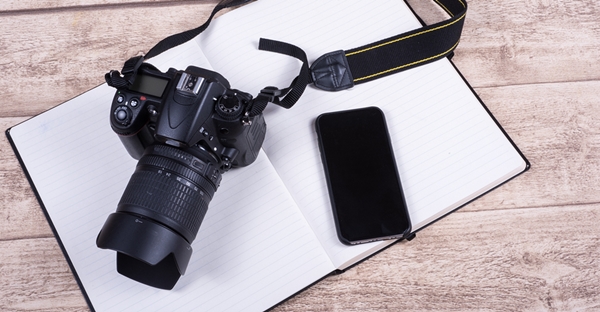Surprisingly, I’ve heard many professional photographers say bad things about Instagram.
“Amateurs have taken over”, “Everyone is a photographer these days” and “Who needs the latest Canon/Nikon/Sony when there are Instagram filters” are some of the most common lines professionals throw out there.
What’s interesting, though, is that sometimes it seems these individuals have no clue of all the possibilities Instagram is actually offering. For free, I might add.
Instagram is an extremely powerful tool that can help you get more exposure for your work, as long as you know how to use it. These tips come from Samuel Zeller, who has successfully used his Instagram account to get major clients.
IT’S NOT YOUR PORTFOLIO
Thinking of it as a way of showing your latest work, using it as a daily journal can be very helpful. I cannot count how many times I had to show someone a picture from a recent shoot that I hadn’t yet on my portfolio.
Not only can you post images you wouldn’t usually put on your portfolio but you’re also free in term of content, no need to show series of work anymore.
It can even act as your business card, I sometimes had to give my Instagram username because I run out of cards. The other person could quickly check out my feed and follow me.
It is also a way to show images in a less formal, more playful way. People are often interested in behind the scenes shots, or simply little things that they would not find on your website. Take advantage of that.
HASHTAG THE RIGHT WAY
Hashtags can have both a good and a bad effect on your reach and engagement, by using them incorrectly you’ll just end up receiving more spam comments and likes from bots rather than from real humans.
First thing, don’t bother using common words like #photographer, #photography or #sunset because they are overloaded with millions of images (new ones every second) and your pictures will not “live” long enough on the hashtag page for other users to see it.
A good example is #justelimage which is a tag specific for minimalistic photography. Or #fujifeed a tag for Fujifilm camera users run by Fujifeed.
I wouldn’t recommend using a hashtag that have more than 250’000 medias on it except if it’s a very specific one filled with good images.
Common words such as #happiness and #love are prone to spamming, there’re often bots configured to auto like and comment on those tags set up by companies to advertise themselves.
One last thing, don’t write your post description with hashtags on every two words like “this is a #sunset that I #photographed in #Switzerland” because firstly it will make you look like a teenager and secondly it’s not very legible.
Put your hashtags at the end of your post and try to limit yourself to 15 of them. 30 is the limit, but it’s a big mess.
STAY CONSISTENT
Keep in mind when you build an audience that the majority of it will expect you to keep posting the same kind of images. For example I post mostly architecture and editorial photography and my followers like that style.
When I post a portrait it always get less engagement not because it’s bad but because my body of followers are mostly into architecture photography.
You shouldn’t restrict yourself in posting only one genre but try to be consistent in your posts, this will ensure that your images always reach the optimum number of people.
Someone that lands on your profile will most likely follow you because of the images he see. If those 9 last posts are a mess, a mix between a lot of genre, then maybe they will not hit the follow button.
USE THIS VISIBILITY
We live in a mobile world, you have a million time more chances than some photo editor stumble on your Instagram account rather than on your portfolio (even if it’s well referenced and cross-linked).
The simple reason is that we mostly browse the Internet from the devices we always have with us, our phones or tablets. Instagram is used by a ton of curators, companies, brands and agencies looking for talents.
Your past and future clients may already use Instagram.
The bigger you grow on this network, the more job offers you could receive, Recently I have been invited by the Olympic museum to attend their press day and do some images and it was mainly because of my reach on Instagram. I was hired to cover a Swisscom event for the same reason.
TIMING IS A KEY
Publishing images should be done regularly in order to be the most effective: find a pattern and stick to it. I’ve tried uploading pictures every day and every three days and I still had the exact same level of engagement.
But as soon as you break that pattern your stats will just drop. Forgot to post for a few days? Your next image will have weaker impact.
People get used to seeing your content popping on their feed at the regular time. The positive thing I noticed when you post regularly but not too often (for example one image every 3 days) is that your images globally get more reach, because they stay on top of your profile for a bigger amount of time.
Read the full article with even more tips over at DIY Photography.
Source: DIY Photography

